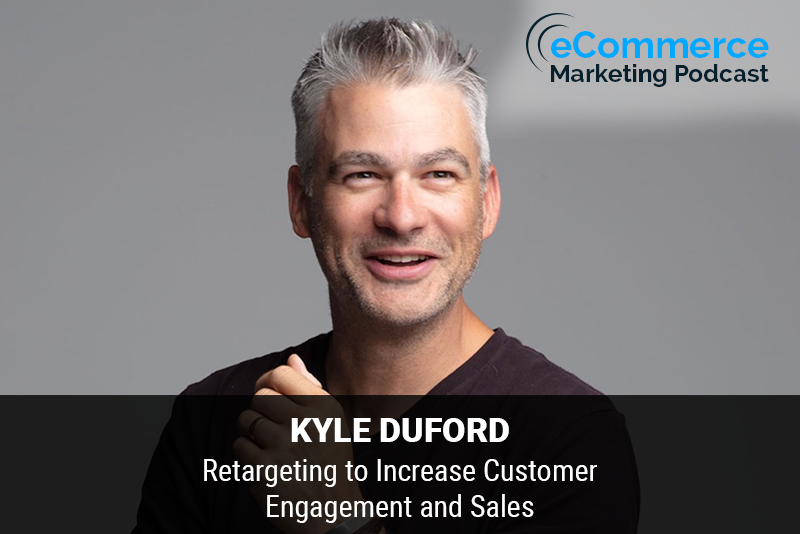
eCommerce Marketing Podcast
The eCommerce Marketing Podcast walks you through everything that goes into ecommerce marketing — from inbound marketing to paid advertising to conversions. Learn the strategies top marketing experts use to grow their businesses.
Retargeting to Increase Customer Engagement and Sales – with Kyle Duford
byArlen Robinson
Marketing Strategies and Topics Covered in this Episode:
- What is retargeting and why is it so important today
- Recommended retargeting strategies that a business should follow
- The tools and resources that can be used to help with retargeting strategies
- The key performance indicators that should be monitored to measure the effectiveness of retargeting

In this episode of the eCommerce Marketing Podcast, host Arlen Robinson interviews Kyle Duford, Executive Creative Director at The Brand Leader. Kyle, with a diverse background in digital, fashion, and sports industries, shares his insights on the importance and strategies of retargeting in digital marketing.
Key Takeaways:
- Introduction to Kyle Duford (00:00:57)
- Overview of Kyle’s background, including his experience with brands like Speck Products and Dr. Martens.
- What is Retargeting? (00:05:09)
- Explanation of retargeting as a strategy to re-engage users who have previously interacted with your website or brand.
- Importance of Retargeting Today (00:08:26)
- Discussion on why retargeting is more crucial than ever due to increased online presence during the COVID-19 pandemic.
- Strategies for Effective Retargeting (00:11:53)
- Tips on starting with broad retargeting and then narrowing down to more specific actions based on user behavior.
- Tools for Retargeting (00:19:50)
- Recommended tools like Google Tag Manager, Facebook Pixel, and AdRoll for implementing retargeting campaigns.
- Key Performance Indicators (00:24:05)
- Metrics to track for successful retargeting campaigns, including click-through rates, conversion rates, and lifetime value of customers.
- Use Case: Dr. Martens (00:27:16)
- Example of how Dr. Martens used retargeting to increase conversions for higher-priced items.
Bullet Points of Key Takeaways with Timestamps:
- [00:00:57] Introduction to Kyle Duford and his background.
- [00:05:09] What is retargeting and why it matters.
- [00:08:26] The growing importance of retargeting in the digital age.
- [00:11:53] Effective retargeting strategies for businesses.
- [00:19:50] Essential tools for implementing retargeting.
- [00:24:05] Key performance indicators to track in retargeting campaigns.
- [00:27:16] Case study of Dr. Martens using retargeting.
Guest Information:
Kyle Duford
- Executive Creative Director at The Brand Leader
- Email: [email protected]
- Website: The Brand Leader











